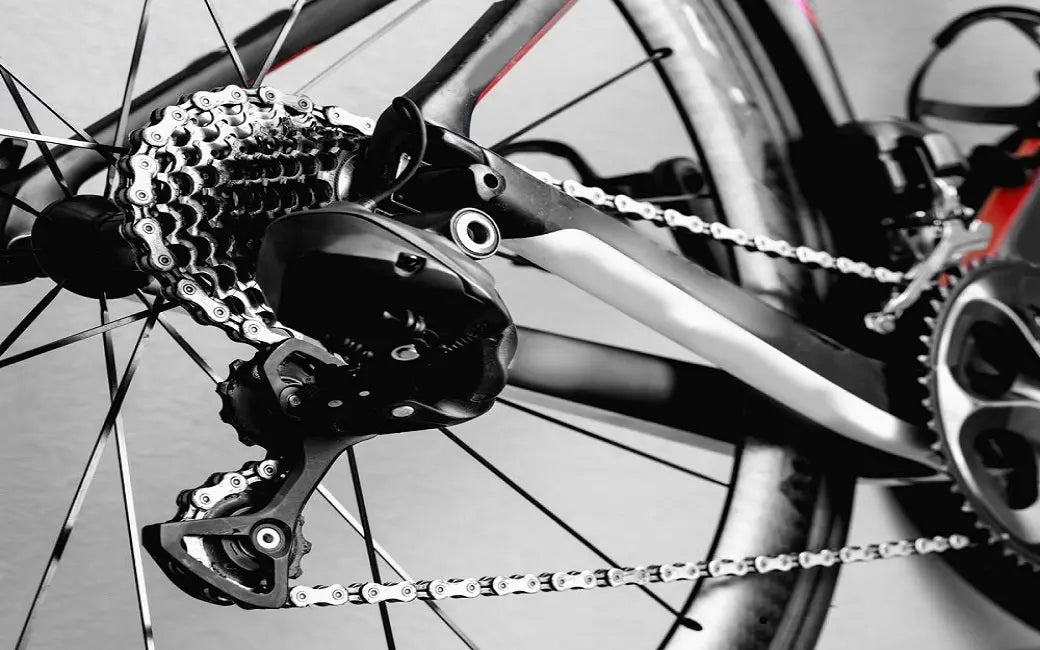
- by HOVSCO Official
What Clean Chain Issues Should You Watch Out For?
- by HOVSCO Official
Watch out for these clean chain issues: over-lubrication, tight links, improper degreaser use, chain stretch, and corrosion. Regularly cleaning your chain is essential, but using the wrong products or methods can cause damage. Always inspect for wear, use bike-specific cleaners, and avoid soaking or high-pressure water to keep your chain running smoothly.
Over-lubrication is a common clean chain issue that can attract dirt and grit, leading to accelerated wear. While lubrication is vital for smooth operation, excess lube forms a sticky layer that traps contaminants. This not only negates your cleaning efforts but can also cause sluggish shifting and premature drivetrain wear.
Chart: Effects of Over-Lubrication on Chain Health
| Symptom | Impact on Chain | Solution |
|---|---|---|
| Dirt buildup | Increased wear | Wipe excess lube after applying |
| Sticky residue | Poor shifting | Use drip-on lube sparingly |
| Attracts contaminants | Shorter chain lifespan | Clean and re-lube as needed |
Using harsh or non-bike-specific degreasers on a clean chain can cause corrosion, cracking, or damage to chain components. Strong chemicals like gasoline, acetone, or diesel should be avoided, as they can degrade metal and compromise chain integrity. Instead, opt for cleaners formulated for bike drivetrains to ensure effective cleaning without harm.
Chain stretch, a misnomer for wear between rollers and pins, is a significant clean chain issue because it leads to poor shifting and excessive wear on chainrings and cogs. Even with regular cleaning, a worn chain must be replaced to maintain performance. Use a chain wear-indicator tool to check for elongation and replace the chain before it damages other drivetrain parts.
Tight links in a clean chain cause skipping, poor shifting, and can even lead to chain breakage. These links are often the result of dirt, corrosion, or improper pin installation. Spot tight links by slowly backpedaling and watching for links that do not bend smoothly through the derailleur. Flexing, cleaning, and proper lubrication can restore most, but damaged links require replacement.
Certain methods can turn a clean chain into a problem chain. Avoid soaking chains in degreaser for extended periods, as prolonged exposure can cause corrosion and cracks. High-pressure water can force grit into chain internals and strip away necessary lubricants. Always use gentle cleaning tools and avoid power washers or harsh chemicals.
Chart: Safe vs. Unsafe Chain Cleaning Methods
| Method | Safe for Clean Chain? | Notes |
|---|---|---|
| Bike-specific degreaser | Yes | Effective and non-corrosive |
| Harsh chemicals (acetone) | No | Can damage metal and cause cracks |
| High-pressure water | No | Pushes grit inside, removes lubrication |
| Chain-cleaning device | Yes | Controls degreaser flow, safe on-bike |
| Soaking for days | No | Leads to corrosion and surface damage |
All ebike models, including those from Ride1Up and HOVSCO, face similar clean chain issues: over-lubrication, improper cleaning, and chain stretch. Ebikes often experience higher torque, making chain maintenance even more critical. Regular inspection, using proper lubricants, and following manufacturer recommendations help avoid these pitfalls across all models.
Preventing clean chain issues begins with routine inspection and maintenance. Clean your chain regularly, use only bike-specific products, and apply lubrication sparingly. After each cleaning, check for tight links, chain stretch, and signs of corrosion. Replace worn components promptly to prevent further drivetrain damage.
When purchasing products for clean chain maintenance, prioritize bike-specific degreasers and lubricants to avoid chemical damage. Invest in a quality chain-cleaning device and a chain wear-indicator tool for accurate checks. HOVSCO recommends regular maintenance with trusted products to ensure longevity and performance for all ebike riders. Avoid generic cleaners and high-pressure washers for best results.
“A clean chain is the foundation of a smooth, safe ride. At HOVSCO, we’ve seen too many riders neglect proper chain care, leading to avoidable issues like premature wear and shifting problems. Use only bike-specific products, avoid over-lubrication, and inspect your chain regularly to keep your ebike running at its best.”
What is the most common clean chain issue?
Over-lubrication, which attracts dirt and causes rapid wear, is the most common clean chain issue.
Can I use household degreasers on my clean chain?
No, household degreasers can damage chain metal. Always use bike-specific cleaners.
How often should I check for chain stretch?
Check chain stretch every few months or after heavy riding to prevent drivetrain damage.
Is high-pressure water safe for cleaning a chain?
No, high-pressure water can embed grit and strip lubricants, leading to more clean chain issues.
Why does my clean chain still skip gears?
Chain stretch or tight links may be present. Inspect and replace the chain if needed.
Share:
How Often Should You Clean and Lubricate the Chain of an Electric Bike?
How to Adjust Your Bike's Mechanicals for Smooth Shifting and Optimal Performance